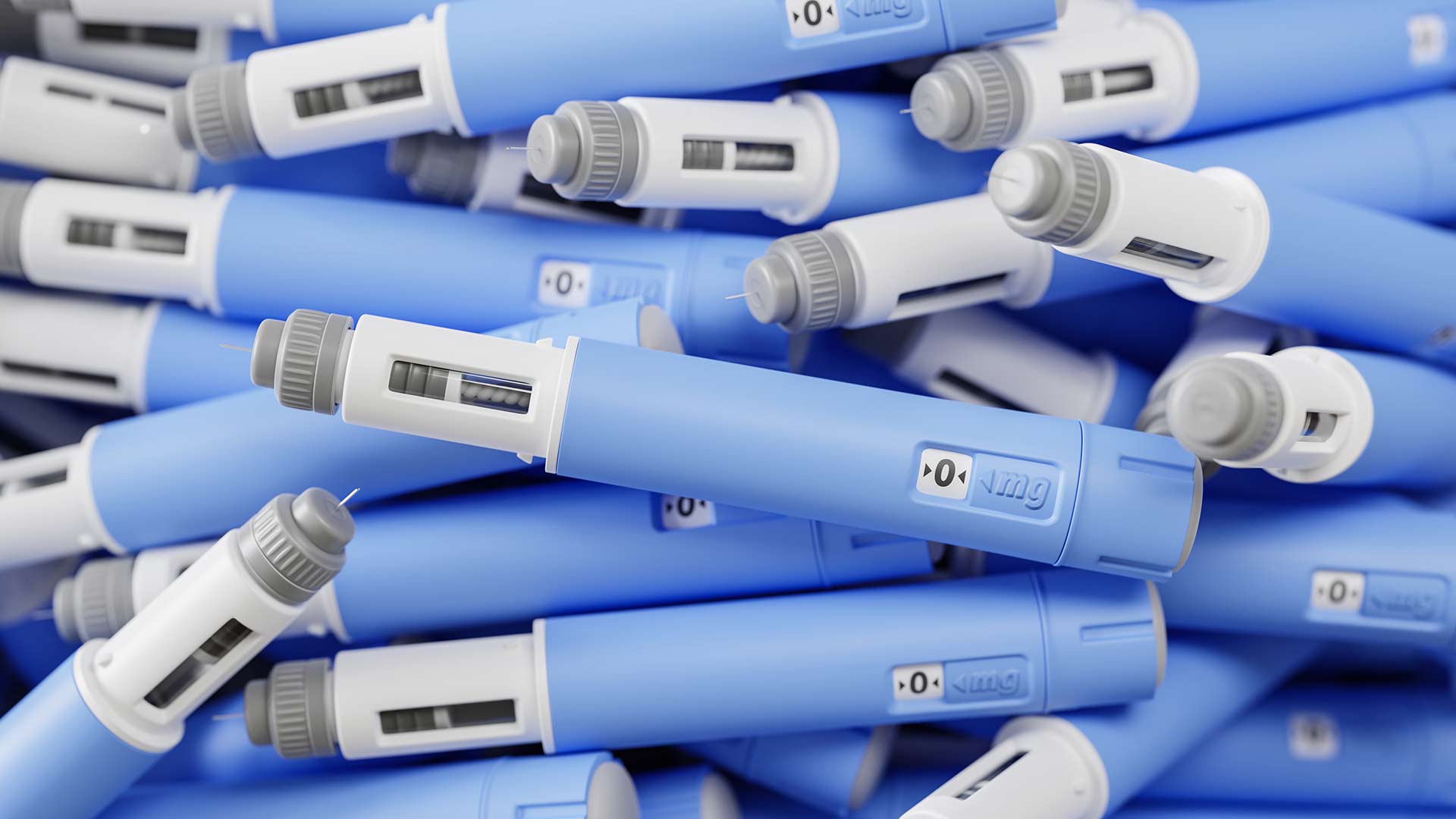The world is getting fatter and more diabetic. Solving this problem will improve millions of lives and could save us all billions of dollars, argues sustainable investment analyst Neil Smith.

The battle of the billion-dollar blockbusters
More than half a billion people now suffer from diabetes – a tenth of the global adult population – with most developing it because of obesity. With that number expected to rise more than 40% by 2045 and prevalence to increase to one in eight, stopping obesity in its tracks could save a lot of suffering and money.
And the opportunity to do this has never been stronger with the new GLP-1 (glucagon-like peptide) treatments that have come to market in recent years. European pharmaceutical producer Novo Nordisk’s Ozempic and Wegovy, and American-based Eli Lilly’s Mounjaro and Zepbound are the undisputed leaders in a market whose value could be worth $100 billion by 2035, according to JPMorgan analysts.
We own Eli Lilly in our Rathbone Greenbank Global Sustainability Fund, but not Novo Nordisk. Eli’s products can both treat Type 2 diabetes (which accounts for more than 90% of total diabetics) and prevent it, while also helping people lose weight. Tirzepatide, the active ingredient in Eli’s drugs, does this by controlling blood sugar levels and promoting weight loss.
GLP-1 drugs mimic the glucagon-like peptide-1 (commonly known as GLP-1) hormone. GLP-1 occurs naturally in your gut after eating and helps the pancreas produce insulin and bring down blood sugar levels. While Novo’s semaglutide active ingredient mimics only this GLP-1 hormone to lower blood sugar levels, Eli’s tirzepatide is a more complex drug. Along with activating the GLP-1 hormone, it also stimulates the glucose-dependent insulinotropic (GIP) hormone – the first (and currently only) treatment that does this. We believe this dual mechanism gives Eli a key competitive advantage in diabetes treatment since it ensures it’s more effective in controlling blood sugar levels.
Helping people slim down doesn’t only prevent diabetes, but a raft of other obesity-related illnesses. Demand for GLP-1 drugs, from both Eli and Novo, has soared taking profits with it. We were drawn to invest in Eli rather than Novo because it seemed better able to ramp up production to meet rapidly growing orders, while also maintaining competitive pricing.
| What is diabetes? |
|
Diabetes mellitus is where you have higher than normal blood sugar (glucose), due either to your body not producing enough of the hormone insulin (Type 1 diabetes) or because the insulin produced isn’t working effectively as the body has become resistant to its effects (Type 2). Your body uses insulin to convert glucose carried in your blood into energy which is used by your body cells. It also helps the body store excess glucose. If glucose isn’t released as energy or stored it can build up in the blood and, over time through the damage to the blood vessels, can lead to health issues such as heart failure, blindness, kidney failure, tingling sensations in limbs (neuropathy), and an increased risk of a stroke. It’s crucial that diabetes patients monitor their blood sugar levels and, if appropriate, take medication to assist the body in producing more insulin. Medical treatments traditionally centred around stimulating the body to make more insulin through medication or by injecting insulin directly into the body. |
The obesity epidemic
The GLP-1 hormone suppresses hunger by telling the brain that you’re full and slowing down digestion in the stomach to kill appetite and increase feelings of satiety. As we’ve explained, there’s a close association between obesity and Type 2 diabetes – indeed, the former may account for more than 80% of the risk of developing the latter.
As society continues eat more unhealthy processed food and drink, the prevalence of obesity has reached epidemic proportions. This trend is exacerbated by limited access to affordable healthy alternatives and reduced exercise. According to research published in the Lancet, all this has led to obesity rates in adults worldwide more than doubling over the past three decades, to an astonishing one billion people, and an increase of almost twice that run rate for children and adolescents.
We think Eli can help solve this health crisis. Zepbound has been found to achieve greater weight loss in adults than rival product Wegovy. Eli is also able to sell its drug more cheaply, which should help it gain market share in a highly price sensitive market. Last month it started selling Zepbound at half the usual price through LillyDirect, a direct-to-consumer online pharmacy it set up in January. To date, the GLP-1 drugs’ high prices have constrained some health insurers in the US and national healthcare systems elsewhere from prescribing them to treat obesity. So price is likely to be a critical factor in seizing a bigger share of the market.
Because the new GLP-1 drugs must be taken continuously (in the form of weekly injections), it’s vital that the drug companies can supply enough of them to meet surging demand. Widespread shortages were reported last year. Eli is investing heavily in ways to ramp up production quickly. Novo is pledging similar investments, but recently acknowledged that supply shortages are unlikely to be fixed in the near future.
The surge in diabetes worldwide
The global burden of Type 2 diabetes is ever increasing. The cost of this in lost years, lessened quality of life and cold hard cash means solutions must be found. There will be no silver bullets and the tools will be spread across prevention and improved treatment. In an ideal world, the best outcomes would be achieved through lifestyle changes, with patients encouraged to do more exercise and healthier eating. The reality is that many sufferers need medical intervention to help manage their condition. In extreme cases, this involves surgery; surgical options can achieve dramatic results, but they are risky, intrusive and difficult to do at scale.
We think GLP-1 drugs are the most significant breakthrough in diabetes and obesity treatment in decades.









